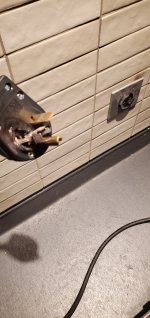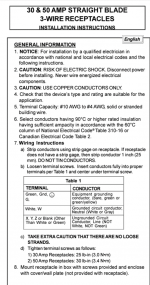raberding
Senior Member
- Location
- Dayton, OH
- Occupation
- Consulting Engineer
We've had a few (like 3) instances where a plug and outlet have melted, and I'm wondering why. And what we should do to prevent this in the future.
Restaurant sites and the equipment is a Warm Food Case. About 3' square, 6' tall, where food is kept warm. Specs say 29 amps, 208/1, 6-30 plug.
We specify a 30a GFCI ckt and 6-30 recept. It's thermostatically controlled.
Wondering if it's an installation issue, or should we go to a 6-50 plug/recept, staying with a 30/2 GFCI ckt.
Any thoughts are appreciated
Restaurant sites and the equipment is a Warm Food Case. About 3' square, 6' tall, where food is kept warm. Specs say 29 amps, 208/1, 6-30 plug.
We specify a 30a GFCI ckt and 6-30 recept. It's thermostatically controlled.
Wondering if it's an installation issue, or should we go to a 6-50 plug/recept, staying with a 30/2 GFCI ckt.
Any thoughts are appreciated


